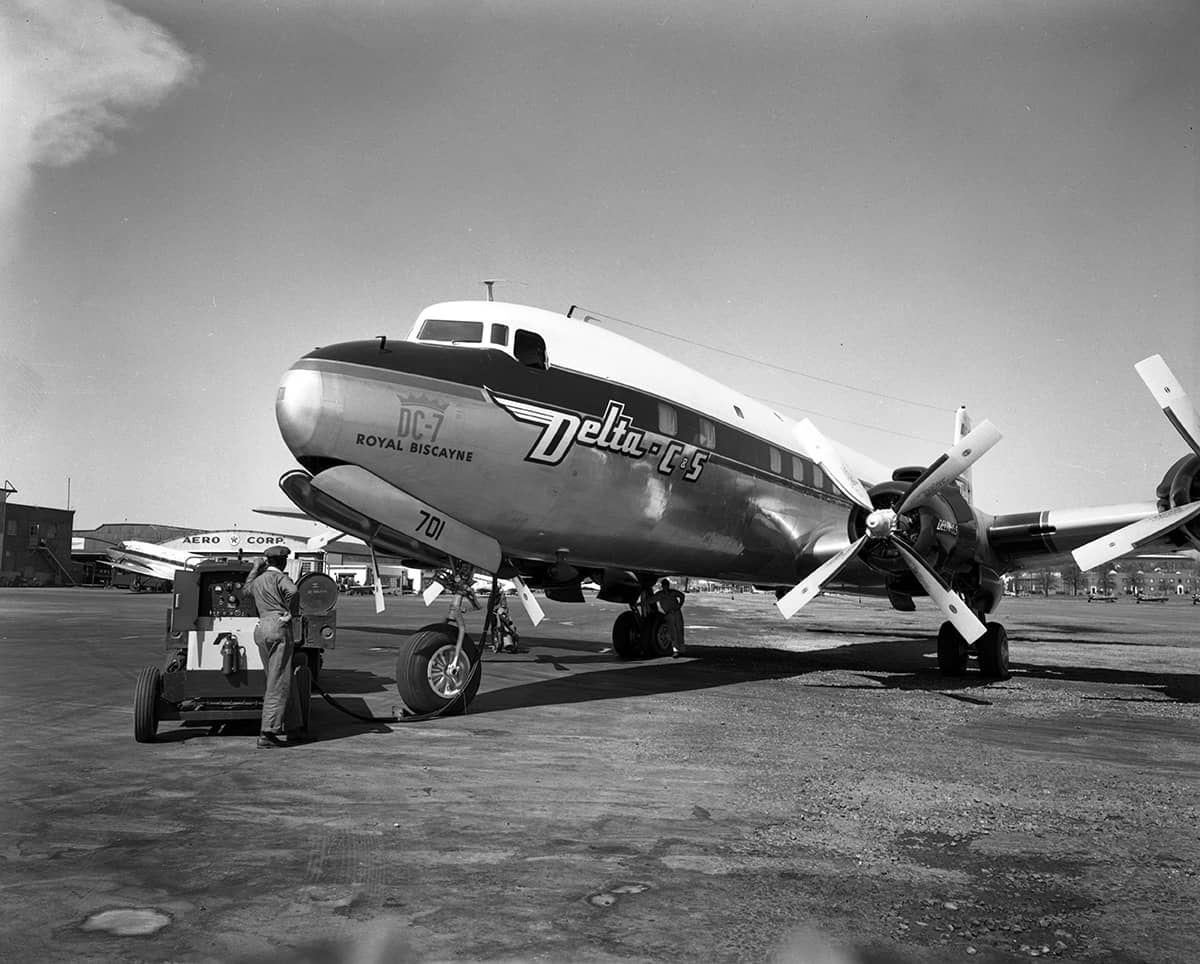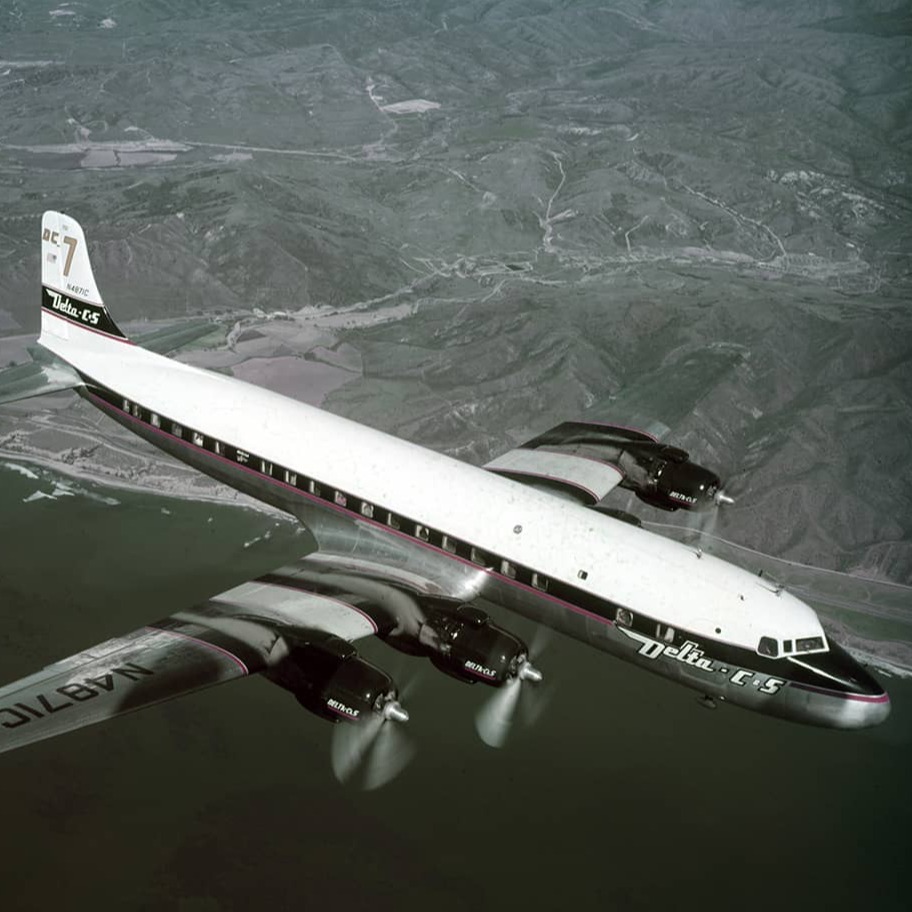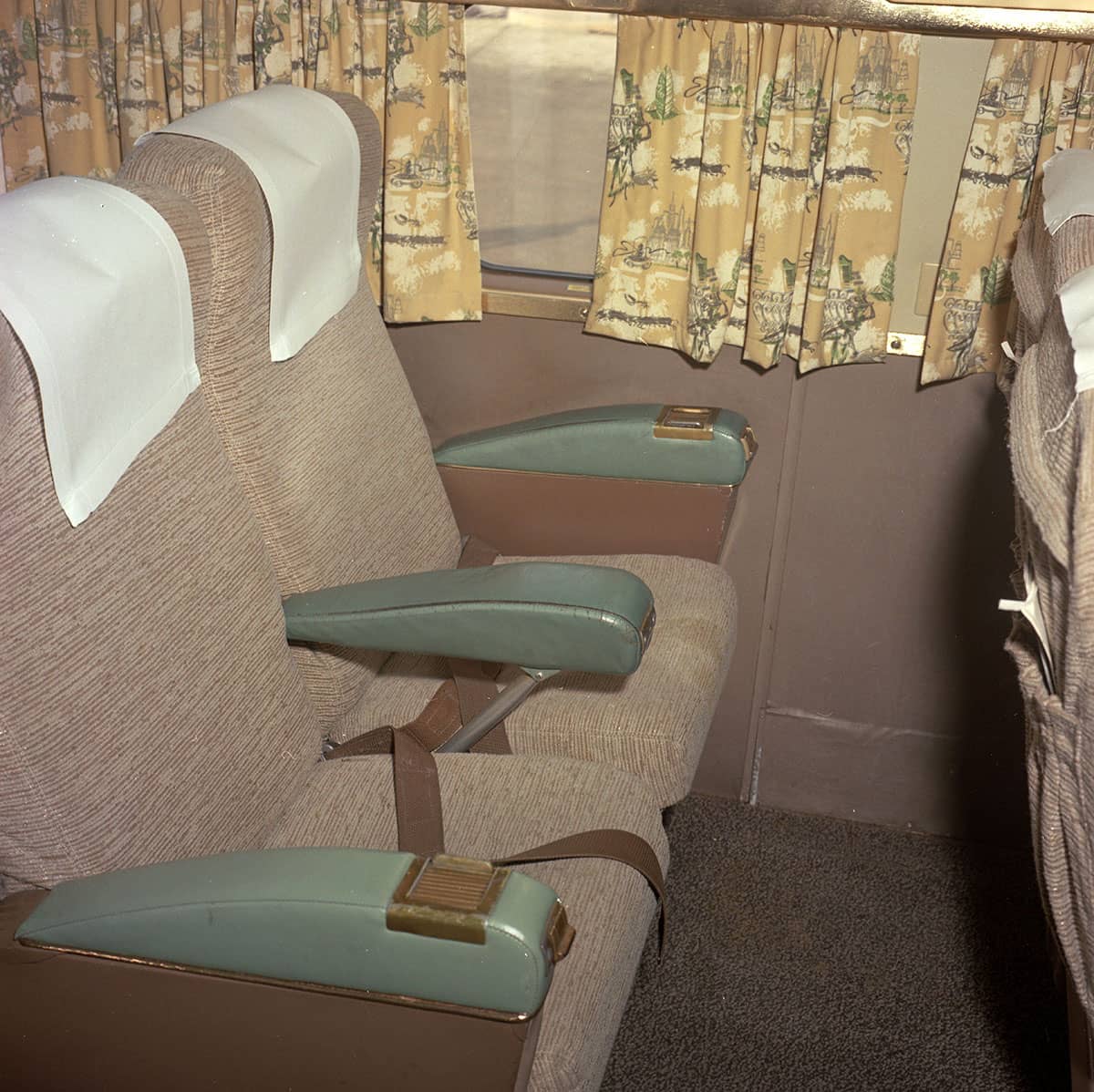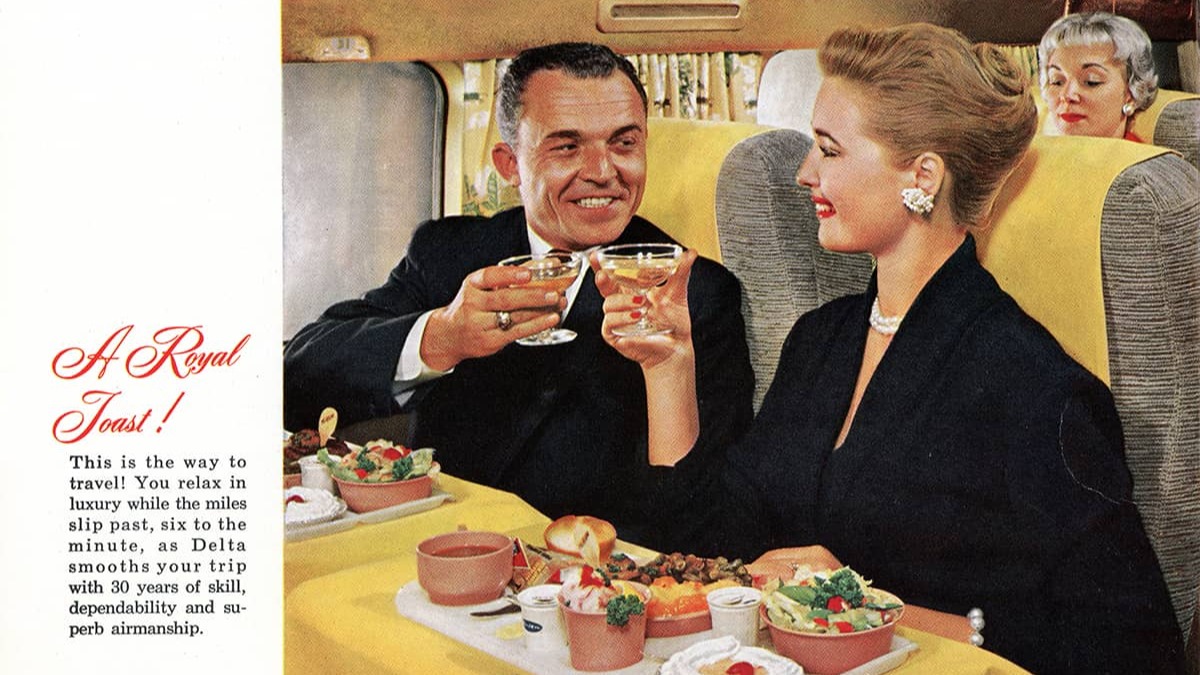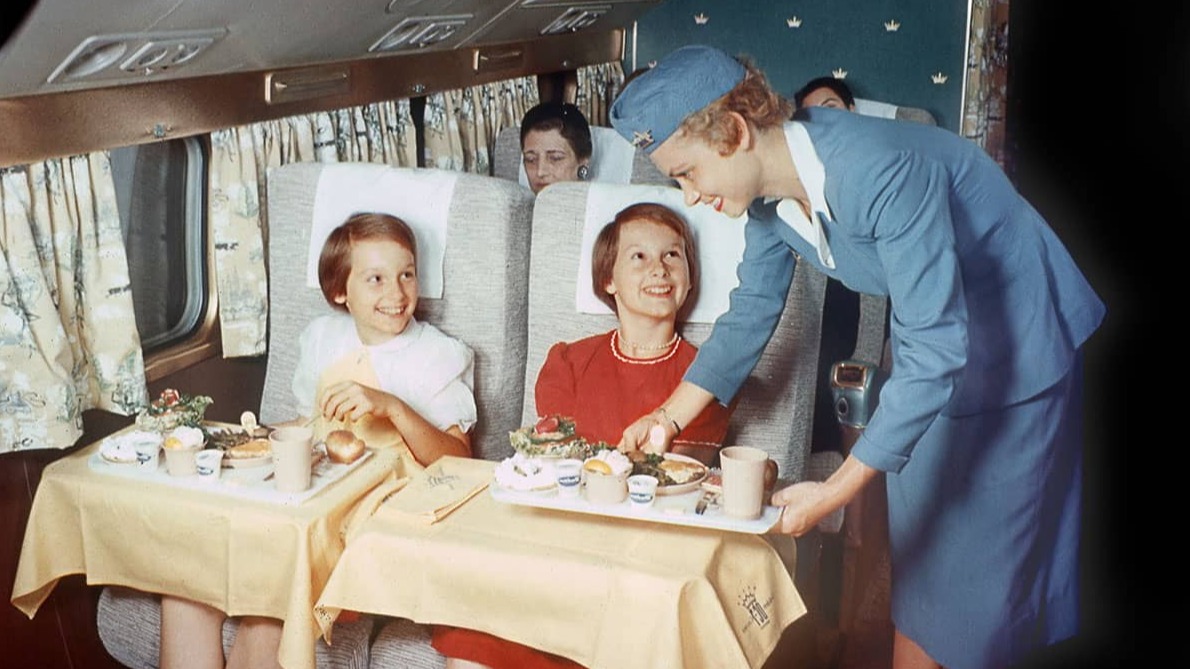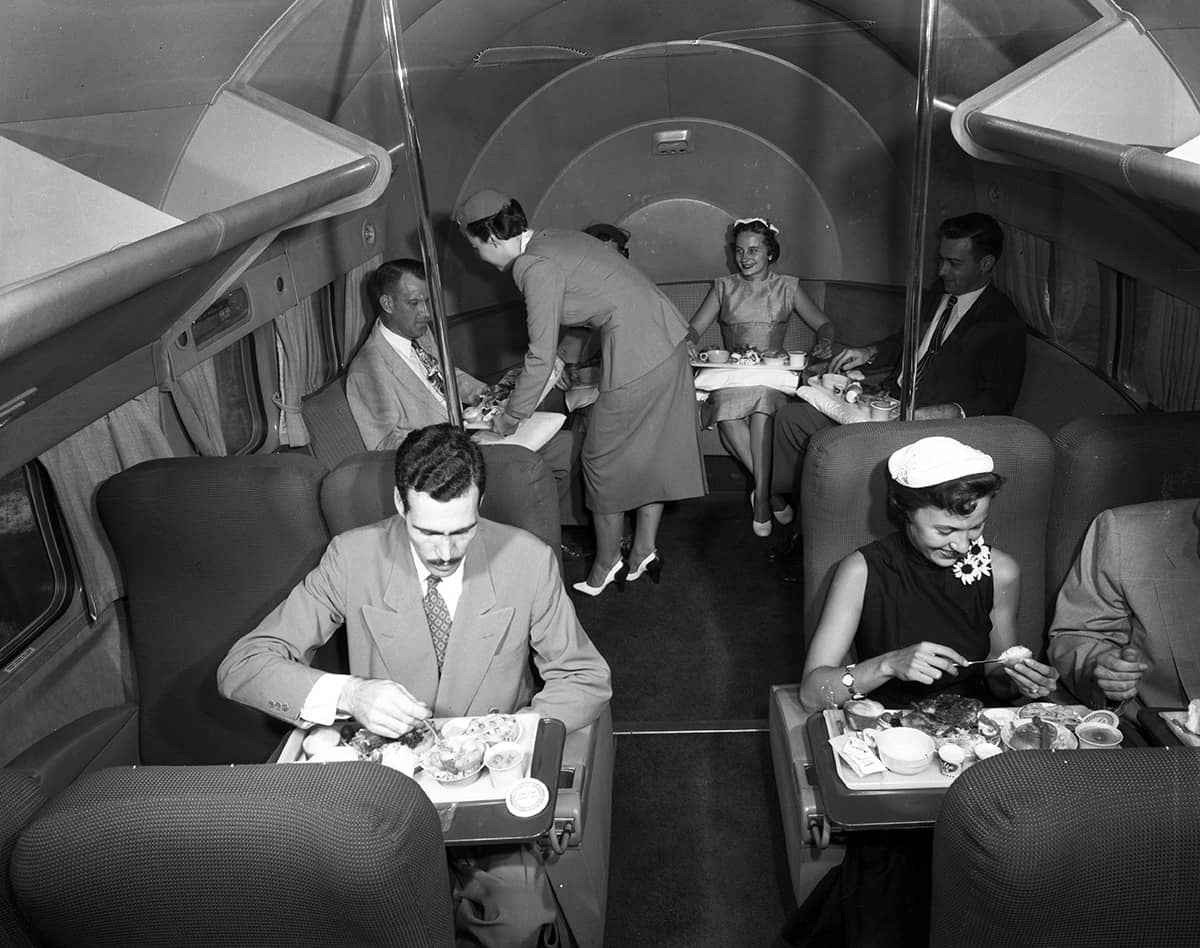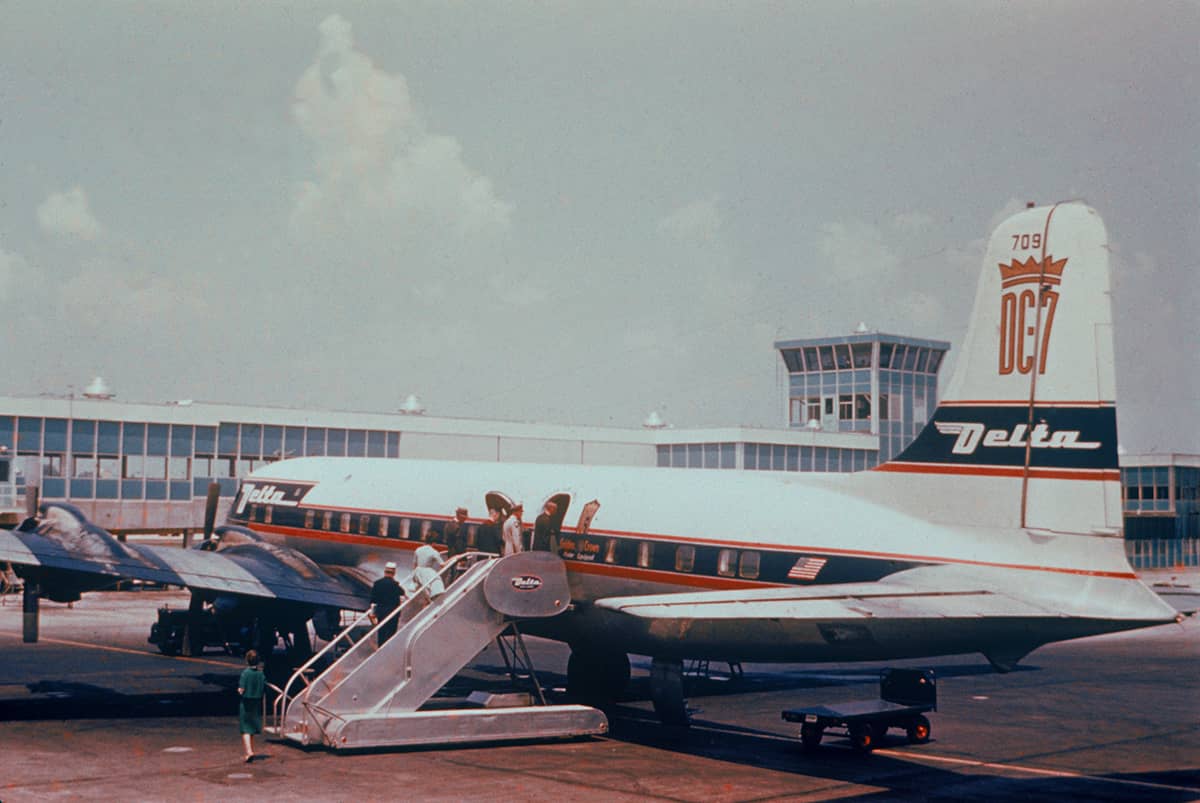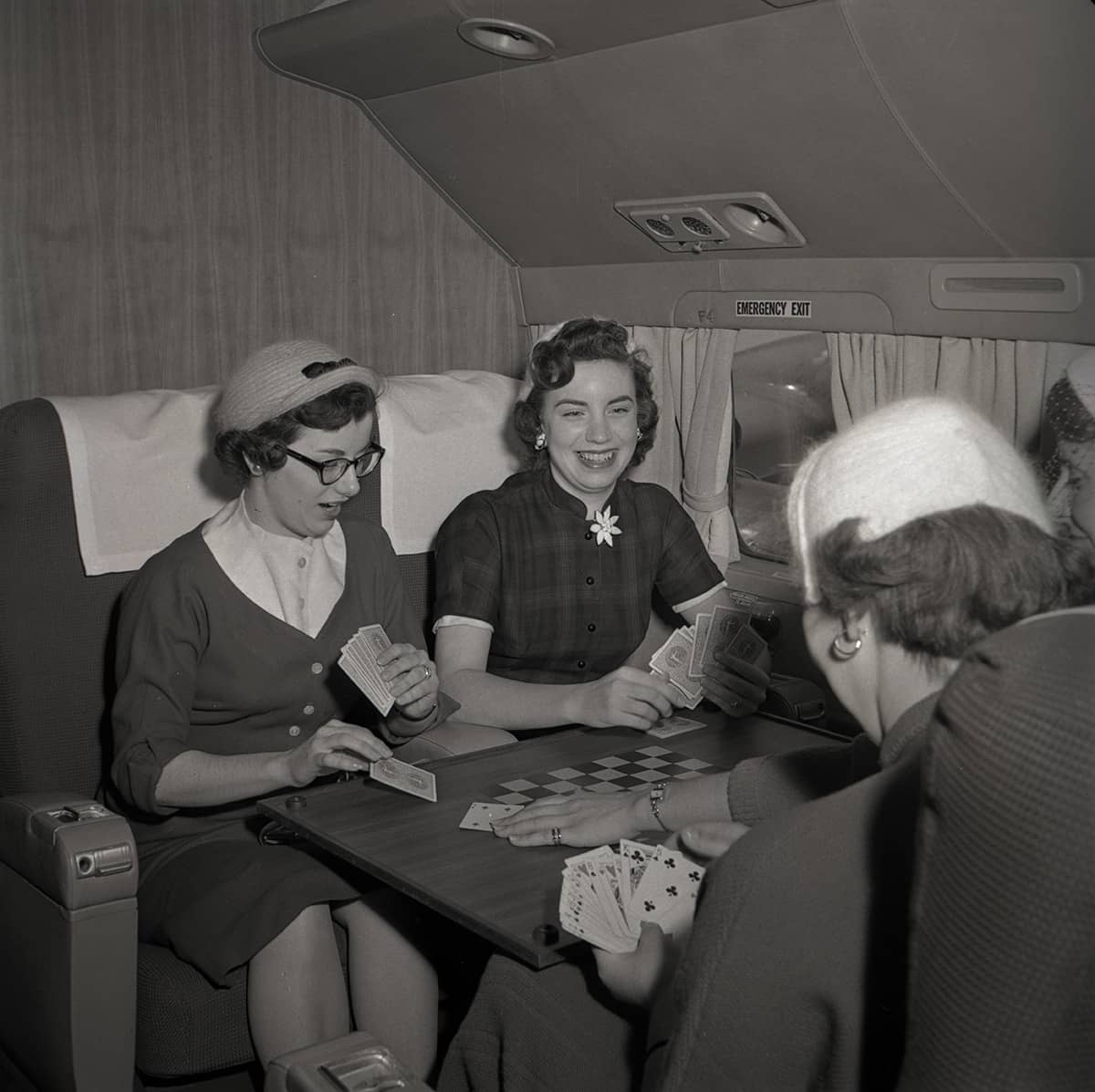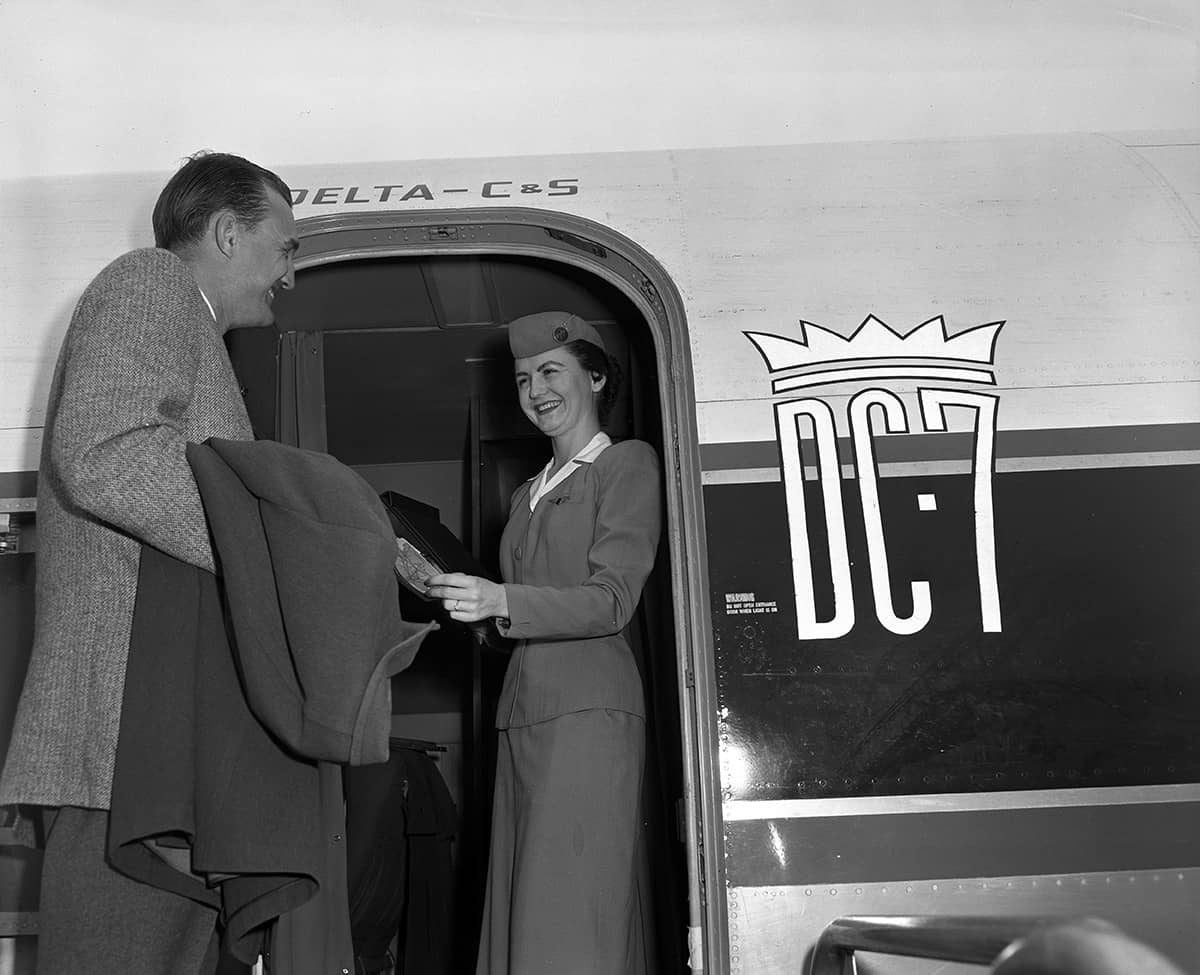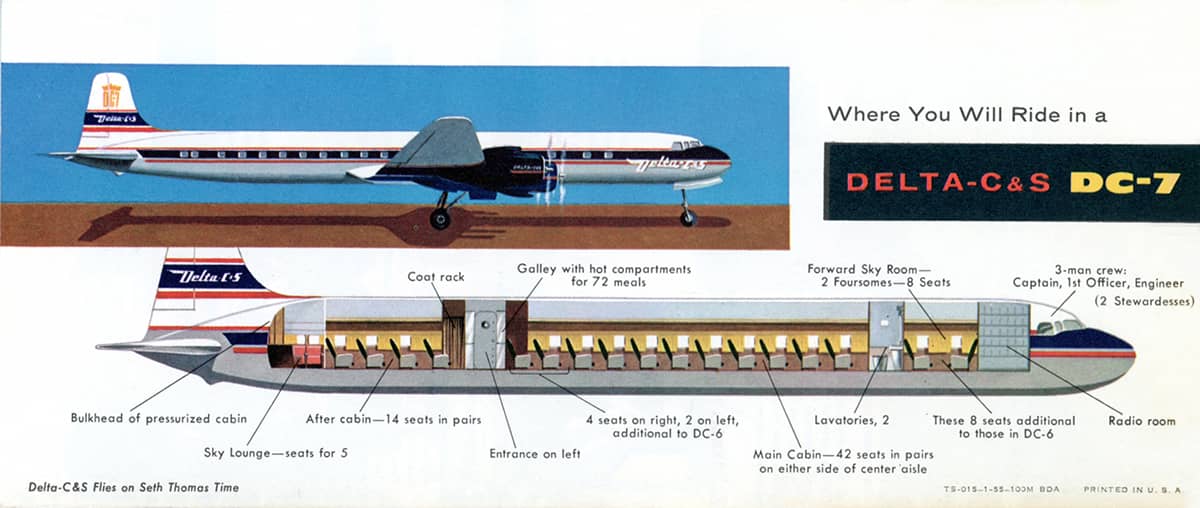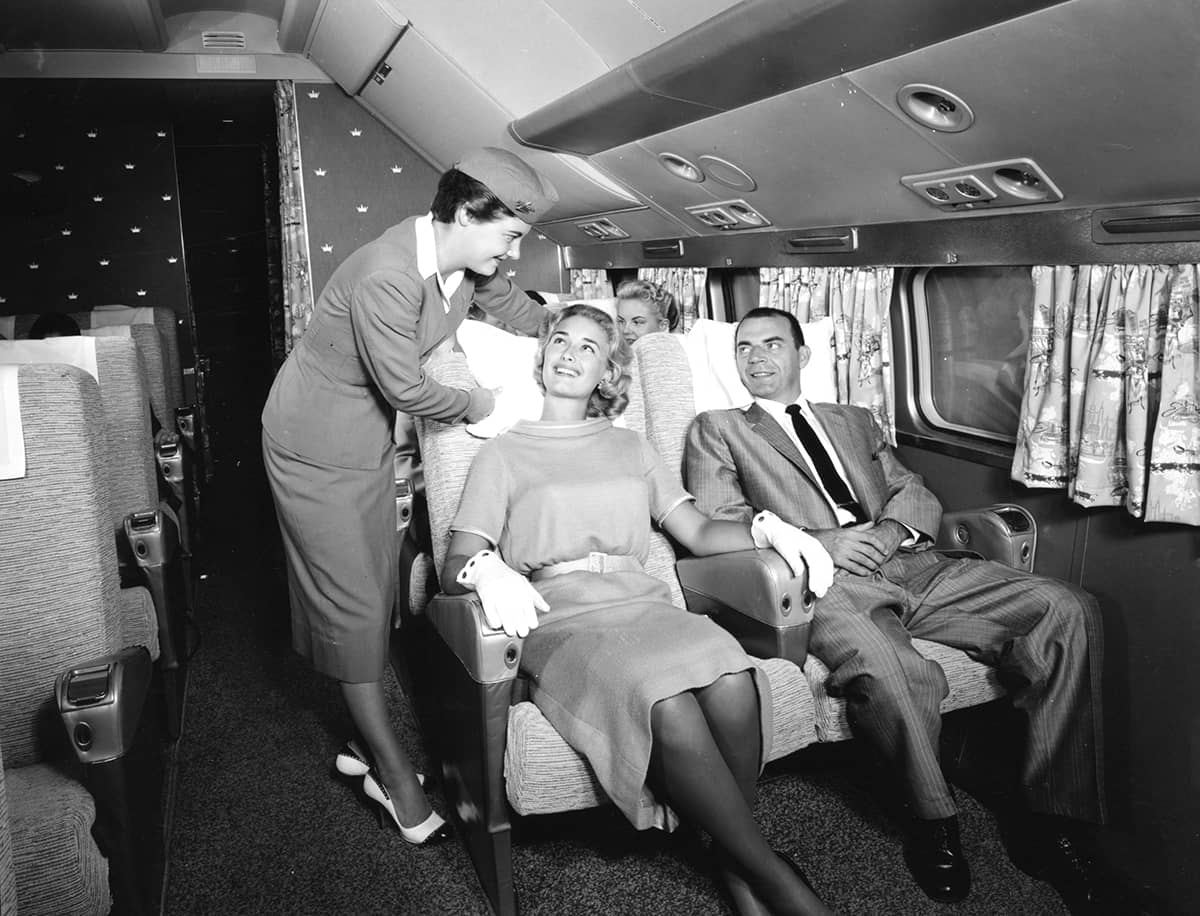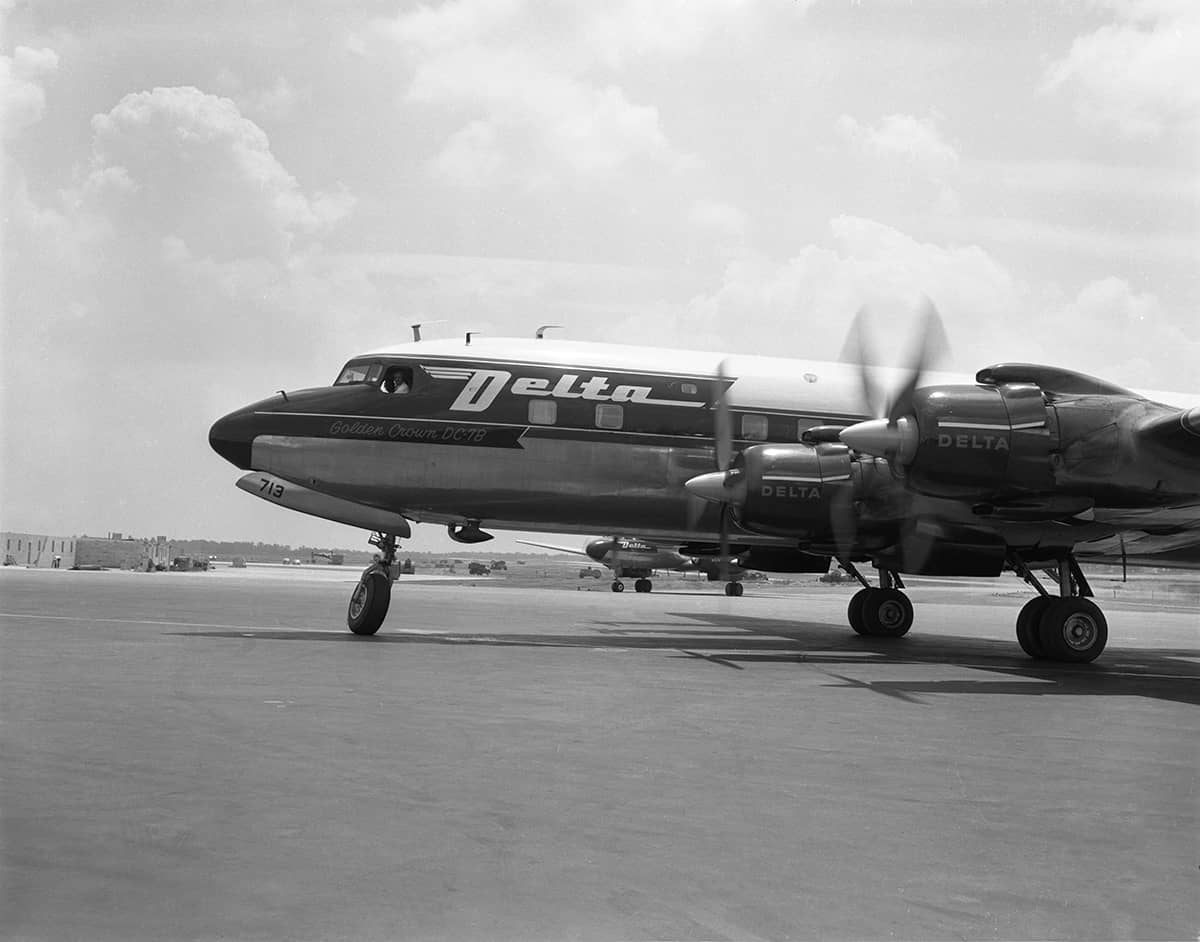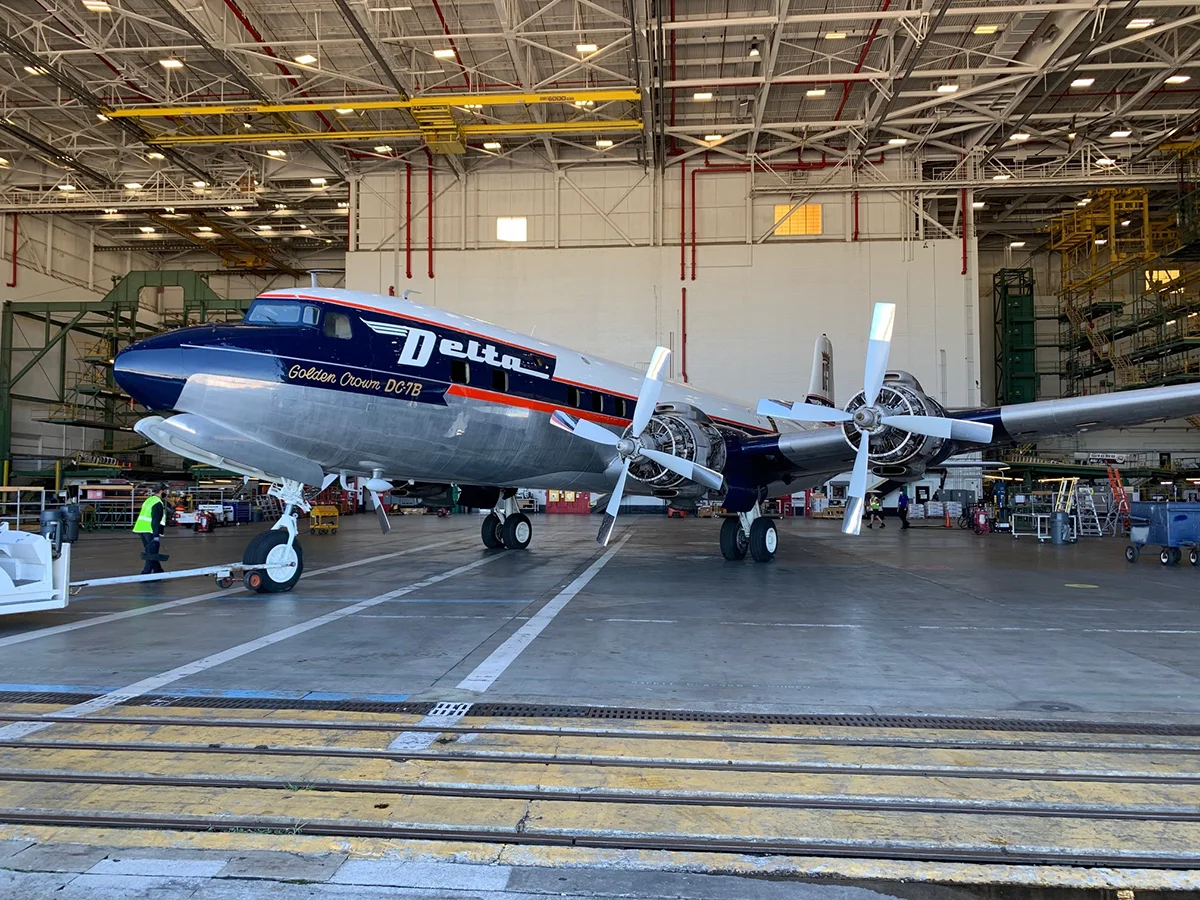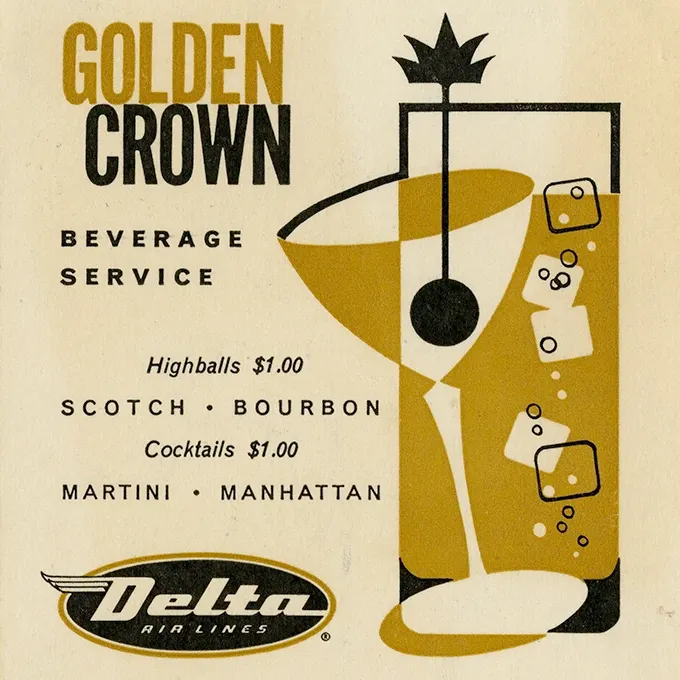- First commercial aircraft able to fly non-stop westbound across the United States against the jet stream.
- Fastest piston-powered commercial airplane in 1954. With a top speed of 410 miles per hour, and average cruising speed of 365 mph, flew almost 25 to 30 mph faster than the Douglas DC-6 and Lockheed Constellation.
- Weight savings of approximately 200 pounds per aircraft with the first use of titanium, a heat-resistant and lightweight metal, on commercial aircraft.
The longer length of the DC-7 and DC-7B fuselage (over eight feet more than the DC-6), allowed room for an eight-passenger Sky Room, with facing seats, and a five-seat Sky Lounge, in addition to two main cabins.
Delta's DC-7 and DC-7B initially held 69 passengers in all first-class seating, except for four DC-7B which were delivered in 1957 with all-coach configuration for 90 passengers.
Improvements in air conditioning and sound proofing provided additional comfort. Windows in critical noise areas had an added third pane of glass, free-floating in rubber, sandwiched between the usual two panes, to reduce noise.
The "luxurious interior" of the DC-7 in 1954, featured rich colors: forest green fabric seats with gray leather arms, a gray-green ceiling and dark carpet. The lounge was gray-green with bright coral upholstery.
First delivered in 1957, the DC-7B model had a brighter interior with tan, white, aqua and turquoise fabrics and leathers accented with gold and silver. Gold window curtains depicted scenes along Delta's routes, "setting the mood for a Millionaire Dream Vacation in such gay holiday spots as New Orleans, Jamaica and Havana."
